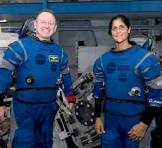An astronaut is a person who has been trained and equipped by a spaceflight program to be a commander or a member of the crew aboard a spacecraft, typically on missions that take place outside of the atmosphere of Earth. From Greek, the word “astronaut” means “star sailor,” indicating their occupation of space travel. Specialized suits, equipment, and spacecraft designed for the harsh conditions of space are provided to astronauts by rigorous training programs.

1.Valeri Polyakov – 437 days
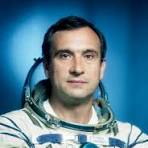
The Soviet and Russian cosmonaut Valeri Polyakov is best known for setting a record for the longest single time spent in space. From January 8, 1994 to March 22, 1995, he was aboard the Mir space station for 437 days in a row. In preparation for potential missions to Mars, this mission was part of a larger effort to study the effects of long-term space travel on the human body. Polyakov began his medical education in Tula, Russia, where he was born on April 27, 1942. He was chosen as a cosmonaut due in large part to his background in space medicine and his area of expertise. Not only did he want to go into space, but he also wanted to learn more about how the human body reacts to being in microgravity for a long time. Polyakov flew into space twice in total. His first mission was in 1988, but his second mission, which lasted for more than 14 months in space, made history. He showed that humans could remain physically and mentally fit even after such a long time in orbit by carrying out numerous medical experiments, keeping an eye on his health, and demonstrating this. In a remarkable gesture to demonstrate the viability of long-duration missions in which astronauts would need to function upon landing on another planet, he remarkable walked unaided from the spacecraft after returning to Earth. After spending a total of 678 days in space over the course of both missions, Valeri Polyakov opted to leave the space program. Although he passed away on September 19, 2022, his legacy continues to serve as a foundation for research into human spaceflight endurance and space medicine.
2. Sergei Avdeyev – 379 days
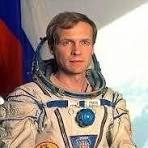
Sergei Avdeyev is a well-known engineer and former Russian cosmonaut who made significant contributions to space exploration. He was born in Russia on January 1, 1956, trained as an engineer, and later joined the Russian space agency as a cosmonaut. Avdeyev is unique in that he has been in space for a very long time. He spent more than 747 days in space over the course of three missions aboard the Mir space station, making him one of the longest humans have ever been in space together. Participation in spacewalks, maintenance of the Mir station, and work on scientific experiments were among his missions. Avdeyev worked as an engineer on a variety of space systems in addition to his time in space. During the late Soviet and early post-Soviet eras, he trained under Russia’s space program and helped ensure that long-distance spaceflight research continued. One of Avdeyev’s most fascinating facts is that he aged by a fraction of a second less than people on Earth because of time dilation caused by spending long periods at high speed in orbit. This is a real-world example of Einstein’s theory of relativity. Since taking a break from active spaceflight at the beginning of the 2000s, he has been involved in space advocacy and research.
3. Frank Rubio – 371 days
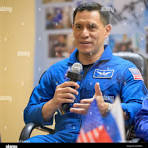
American astronaut and physician Frank Rubio works for NASA. His participation in a space mission that broke records aboard the International Space Station (ISS) made headlines. Rubio stands out because of his impressive career in a variety of fields and his background in both medicine and the military. Rubio, who was born in 1975 in Los Angeles, California, later relocated to Florida. He earned his degree in the US. In 1998, he graduated from the Military Academy at West Point with a degree in international relations. He completed over 1,100 flight hours as a Black Hawk helicopter pilot, including combat missions in Iraq, Afghanistan, and Bosnia. He completed his training as a doctor of medicine at the Uniformed Services University of the Health Sciences following his time as a pilot. In 2017, NASA chose Rubio to be one of its astronauts. He launched into space aboard a Russian Soyuz spacecraft in September 2022. His mission was extended due to technical issues with the spacecraft, and he spent over a year in space. He was supposed to return in March 2023. As a result, he broke previous records and became the American astronaut with the longest single spaceflight. NASA’s understanding of long-term space travel was enhanced by Rubio’s extended stay, which is crucial for planning future missions to Mars and the Moon.
4. Vladimir Titov and Musa Manarov – 365 days
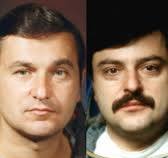
Vladimir Georgievich Titov was a cosmonaut and colonel in the Soviet Air Force. He was born on January 1, 1947, in the Russian SFSR, which was a part of the former Soviet Union. Before being chosen for cosmonaut training in 1976, he trained as a pilot. Both his endurance in orbit and his involvement in significant space history events make Titov’s career in space notable. When he was a member of the crew getting ready to launch aboard the Soyuz T-10-1 in 1983, it was one of the most dramatic moments in his career. The rocket caught fire just seconds before liftoff. The launch escape system saved the crew by automatically pulling them to safety—a rare and risky event that demonstrated the significance of spaceflight emergency procedures. Following that, Titov flew two lengthy missions from the Mir space station. Soyuz TM-4, his first successful flight, took place between 1987 and 1988, and he was in space for more than a year. Additionally, he flew on U.S. In 1995, he became one of the few Russian cosmonauts to fly with NASA aboard the Space Shuttle Atlantis (STS-63).
Musa Khiramanovich Manarov is an Azerbaijani-born Soviet and Russian cosmonaut who was born in Baku, Azerbaijan SSR, on March 22, 1951. Manarov was chosen to be a cosmonaut in 1978 after receiving training as an engineer and then as a flight engineer. Long-term missions aboard the Mir space station benefited greatly from his expertise in orbital operations and systems. Manarov and Vladimir Titov flew in the Soyuz TM-4 for the first time into space. By spending 366 days in orbit, they established a new record for the longest space mission at the time. This mission proved that prolonged stays in microgravity were doable, marking a significant turning point in human spaceflight. His second flight, in the Soyuz TM-11 from 1990 to 1991, lasted only six months. Over the course of his professional life, Manarov spent more than 541 days in space. He also contributed to experiments and maintenance outside the Mir station by participating in multiple spacewalks (EVAs).
5. Mark Vande Hei – 355 days
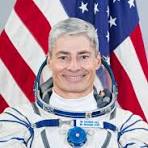
Mark Vande Hei is a retired American astronaut. Colonel in the Army. He was born in Falls Church, Virginia, on November 10, 1966. He was a combat engineer in the military prior to joining NASA, and he later taught physics at the United States. West Point Military Academy He was chosen by NASA to be an astronaut in 2009, and in 2017, he flew Expedition 53/54 to the International Space Station (ISS) for the first time. His second spaceflight began in April 2021, and he spent 355 days in space, breaking the American record for the longest single spaceflight at the time by an American astronaut. Scientific research, spacewalks, and international collaboration with Russian cosmonauts and other astronauts were all part of Vande Hei’s work on the ISS. His extended time in space helped scientists learn more about how long-distance missions affect the human body, which is important information for future missions to Mars and the Moon. He will retire from NASA in 2022, but he is still well-known for his work in space exploration.
6. Scott Kelly and Mikhail Kornienko – 340 days
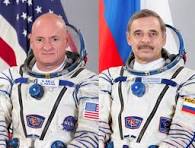
Scott Kelly and Mikhail Kornienko are both veteran astronauts who became internationally recognized for their participation in a groundbreaking mission aboard the International Space Station (ISS). They set out on one of the longest spaceflights in history, which lasted nearly a year, from March 27, 2015, to March 1, 2016, in 2015. This mission was unique not only for its length but also for the purpose it served. It was developed by Roscosmos and NASA to investigate the long-term effects of space travel on the human body, which is crucial for preparing plans for future missions to Mars and beyond. The effects of prolonged microgravity on things like bone density, muscle mass, vision, and even gene expression were closely monitored by scientists. The fact that Scott Kelly’s identical twin brother, fellow astronaut Mark Kelly, remained on Earth made his role particularly valuable. In order to gain a deeper comprehension of how space affects the human body on a molecular level, researchers were able to carry out a twin study in which they compared the biological changes that occurred between the two brothers. In the meantime, Russian cosmonaut Mikhail Kornienko brought a wealth of engineering and flight expertise to the mission. He had been on the ISS for a shorter mission before, but the one-year mission became his career’s turning point. In addition to demonstrating human endurance in space, their successful return to Earth laid the groundwork for future long-duration missions and significantly advanced space medicine and research.
7. Christina Koch – 328 days
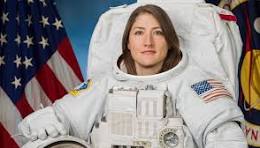
Christina Koch is an American astronaut and engineer who holds the record for the longest single spaceflight by a woman and participated in the first all-female spacewalk. She was born in Grand Rapids, Michigan, on January 29, 1979, but she spent her childhood in Jacksonville, North Carolina. Koch earned degrees in electrical engineering and physics from North Carolina State University, where she also completed a master’s in electrical engineering. She worked as an engineer at the National Oceanic and Atmospheric Administration (NOAA) and conducted scientific fieldwork in Antarctica and Greenland prior to joining NASA. She was chosen by NASA in 2013 to participate in their astronaut training program. Her first spaceflight began in March 2019 aboard the International Space Station (ISS). She was in space for 328 days, making her mission the longest by a woman and the second longest by a U.S. astronaut at the time. On October 18, 2019, she and astronaut Jessica Meir carried out the first-ever female-only spacewalk, marking one of her most significant milestones. This marked a major milestone in the history of space exploration and gender representation in STEM fields. Additionally, Christina Koch is a part of NASA’s Artemis program, which aims to bring people back to the Moon. She was chosen to be a part of the Artemis II mission, which is expected to be the first crewed mission since Apollo to send astronauts around the Moon.
8. Peggy Whitson – 289 days
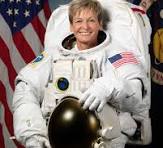
Peggy Whitson is a biochemist from the United States who worked as an astronaut for NASA. She is known for her groundbreaking work in space exploration. With 675 days across multiple missions, she holds the record for the most consecutive days spent in space by an American astronaut. Whitson was born on February 9, 1960, in Mount Ayr, Iowa. He spent his childhood on a farm and became interested in space science after watching the 1969 moon landing. Before joining NASA in the middle of the 1980s, she worked as a researcher after receiving her Ph.D. in biochemistry from Rice University. She became an astronaut in 1996, and in 2002, she flew her first space mission on Expedition 5. She became the first woman to command the International Space Station (ISS) twice by serving as its commander on both Expedition 16 in 2007–2008 and Expedition 51 in 2017. In addition, Whitson broke numerous gender and age barriers in the field of spaceflight during her career. She was also the first female Chief of the NASA Astronaut Office. She continued to inspire a new generation of scientists and explorers when she returned to space in 2023 as part of a private Axiom Space mission after retiring from NASA. Her legacy is one of perseverance, scientific accomplishment, and forging the way for women to pursue careers in STEM and space.
9. Sunita Williams and Barry “Butch” Wilmore – 286 days
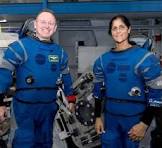
Sunita Williams is an accomplished American astronaut and officer in the United States Navy. She was born in Euclid, Ohio, on September 19, 1965. She is of Slovenian and Indian descent. Williams is well-known for her record-breaking spacewalks and long spaceflights. She joined NASA in 1998, and she flew on both the Space Shuttle and the ISS. Her first mission was in 2006 aboard STS-116, during which she spent more than six months on the ISS. She participated in numerous spacewalks during that time, making a significant contribution to the assembly and upkeep of the ISS. For a number of years, she held the record for most consecutive spacewalks by a female astronaut. Williams is also well-known for her work with NASA’s Commercial Crew Program, which aims to send astronauts into space with private companies. She has been chosen to pilot Boeing’s CST-100 Starliner, a move in the direction of innovative spacecraft technologies. She has shared videos from space that show daily life aboard the ISS, including how astronauts exercise and sleep, and she is admired for her down-to-earth personality.
Barry “Butch” Wilmore
Barry Eugene “Butch” Wilmore is a retired U.S. astronaut from NASA. Born in Murfreesboro, Tennessee, on December 29, 1962, the Navy captain He was a naval aviator and test pilot prior to joining NASA, flying a variety of military aircraft and accumulating thousands of flight hours. In 2000, Wilmore became an astronaut for NASA, and he has flown numerous missions. In 2009, he flew into space aboard STS-129, and in 2014–2015, he led Expedition 42 on the International Space Station. He oversaw important scientific research and technical operations while he was on the ISS and led several spacewalks. Like Williams, he is also a member of the Commercial Crew team and has been chosen to fly aboard the Boeing Starliner spacecraft. He is an important player in the development of the next generation of crewed space missions due to his extensive experience as an engineer and pilot. In addition to his leadership in space, Wilmore is admired for his calm demeanor and dedication to mentoring younger astronauts.
10. Andrew Morgan – 272 days
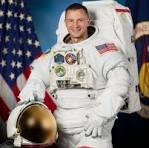
R. Andrew Morgan is a doctor from the United States, an astronaut from NASA, and Army Colonel He was born in Morgantown, West Virginia, on February 5, 1976. He has worked in medicine, the military, and space exploration. He went to the United States and got a Bachelor of Science degree. In 1998, he graduated from the Military Academy at West Point, and in 2002, he earned a Doctor of Medicine degree from the Uniformed Services University of the Health Sciences. Morgan was a doctor who worked in elite military units, including roles with the United States, and specialized in emergency medicine. Special operations by the Army He was chosen as an astronaut by NASA in 2013, and in July 2019, he traveled to space for the first time aboard the Soyuz MS-13. He spent 272 days on the International Space Station (ISS) during Expeditions 60, 61, and 62, performing complex maintenance on the ISS’s power systems and robotic arm, and contributing to scientific research. Morgan was successful in both the military and space because of his strong communication skills, physical fitness, and hands-on approach to problem solving.

